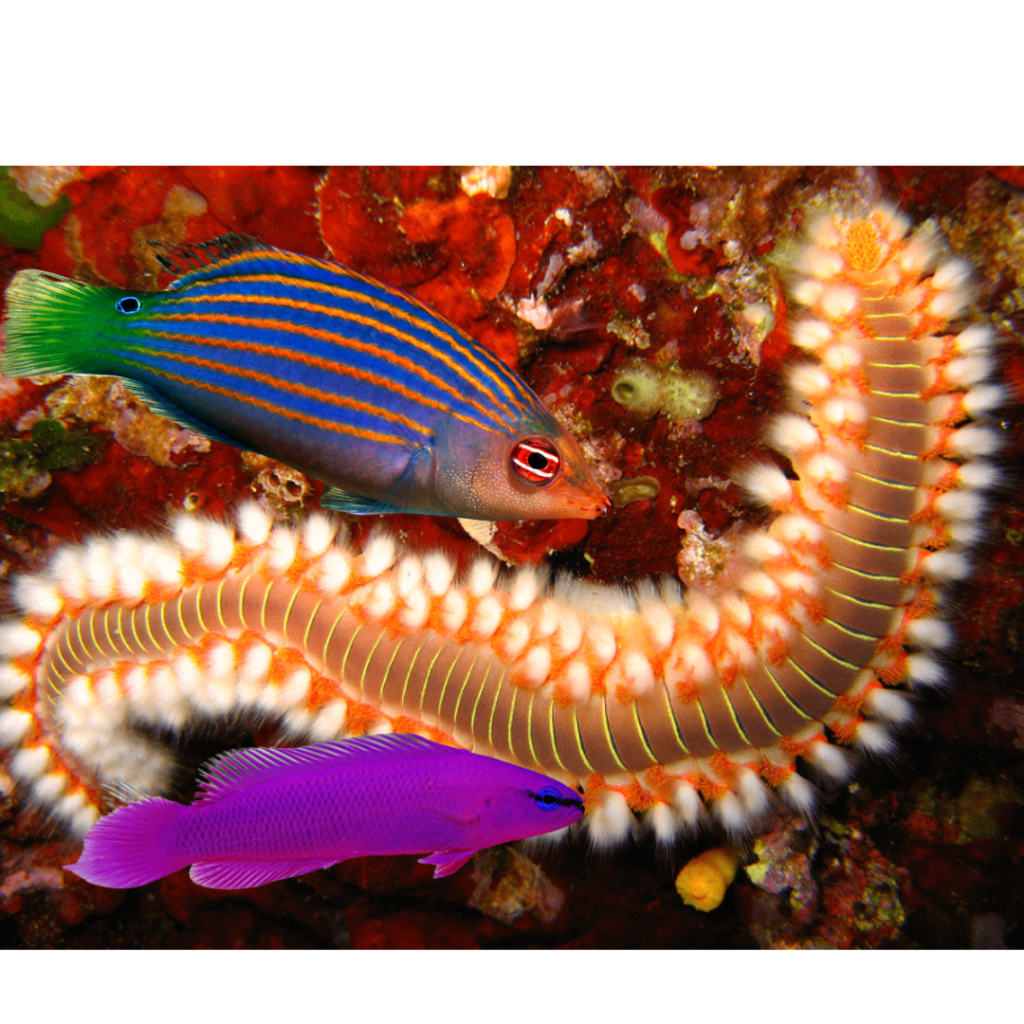When faced with the question, “What eats bristle worms?” I knew I needed to find a solution to control the growing bristle worm population in my saltwater aquarium. After conducting research, I discovered that introducing certain fish species, such as the Six Line Wrasse, could help keep these worms in check. In this article, I’ll share my personal journey of identifying various types of fish that eat bristle worms and how they reduced the population in my reef tank.
Fish that eat bristle worms
Many fish species are known to eat bristle worms, helping to maintain a balanced population in saltwater aquariums. Some of the most effective fish for controlling bristle worm populations include wrasses, hawkfish, gobies, and dottybacks.
Each of these fish has unique characteristics and behaviors that make them well-suited for targeting bristle worms while coexisting with other tank inhabitants.
Wrasses
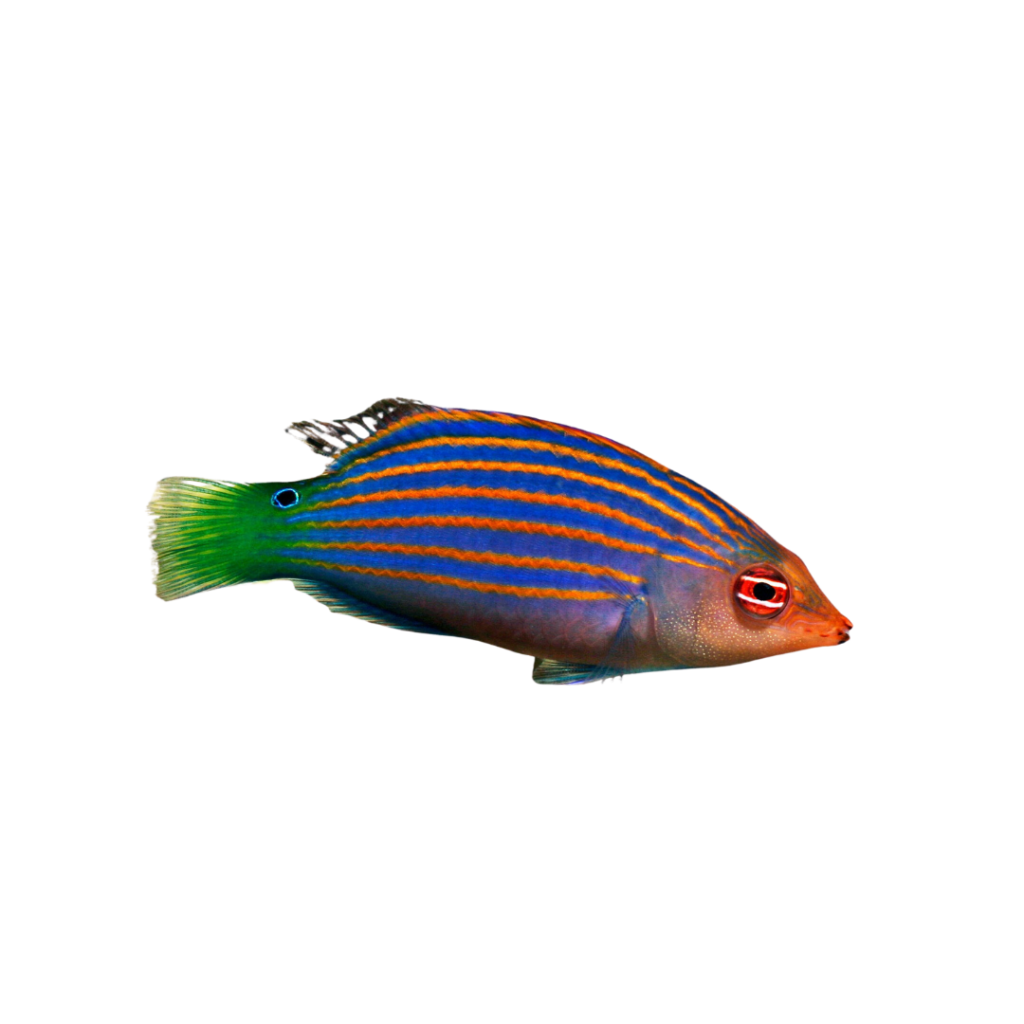
Wrasses are a popular choice for controlling bristle worm populations in reef-safe tanks. The Six Line Wrasse is a particularly effective hunter of bristle worms.
It is essential to provide adequate hiding spaces for wrasses and to keep them well-fed to prevent aggression towards other fish. Halichoeres species, such as Melanurus, Yellow, Christmas, Dusky, and Red-Lined Wrasses, are also known to target bristle worms.
However, wrasses may consume some snails and shrimp, so consider this when introducing them to your aquarium.
Hawkfish
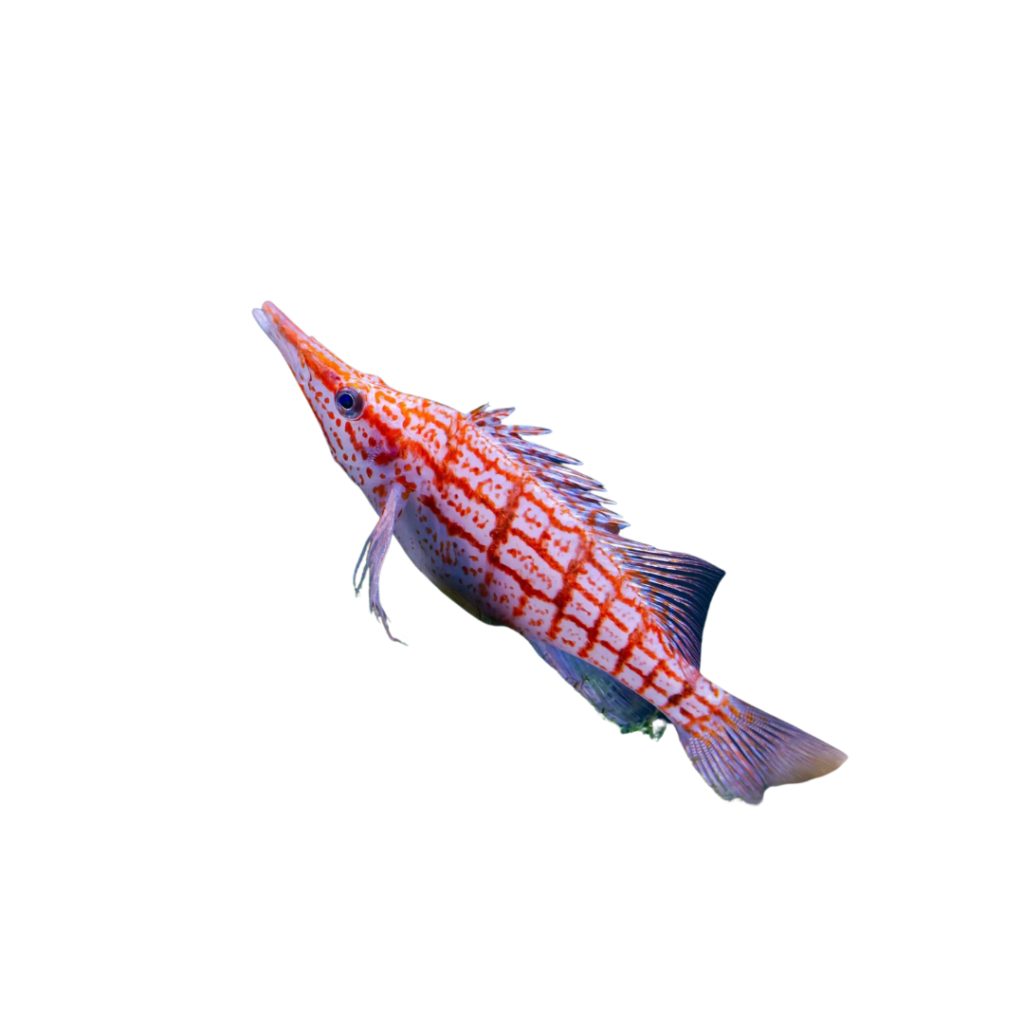
Flame Hawkfish are suitable for smaller reef tanks and are known to eat bristle worms. They prefer to dwell near rocks, which is ideal since bristle worms often hide in rocky crevices.
Longnose Hawkfish are another option to consider for bristle worm control. They are relatively easy to care for, making them a suitable choice for both experienced and beginner aquarists.
Gobies
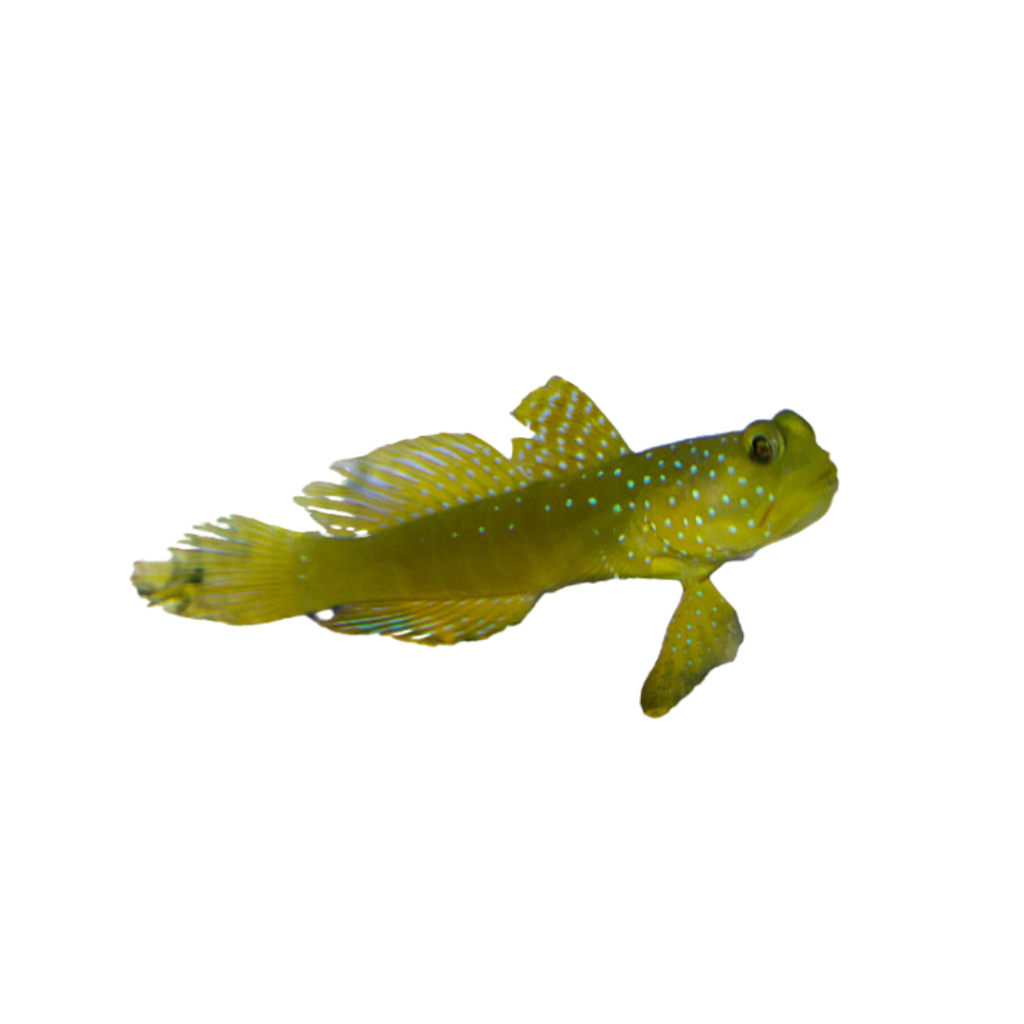
With numerous gobies available, selecting a Yellow Watchman Goby will be a great addition to your aquarium for bristle worm control.
These peaceful and easy-to-care-for fish are compatible with reefs and enjoy consuming worms.
Apart from their appetite for bristle worms, gobies are also known for their fascinating burrowing behavior and the symbiotic relationships they form with certain shrimps.
Dottybacks
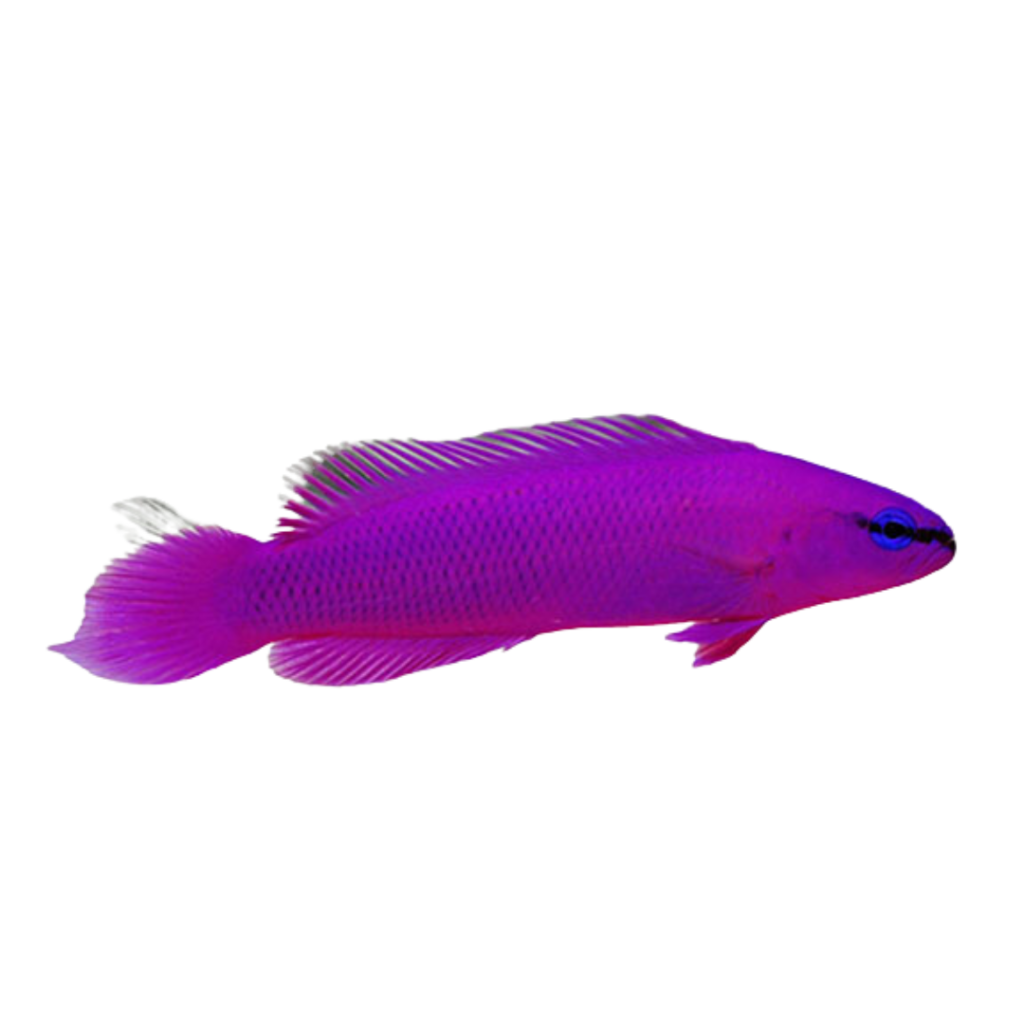
Neon Dottybacks are another option, although they tend to be semi-aggressive. However, they are still effective in controlling bristle worm populations in your saltwater aquarium.
Dottybacks are small, brightly colored fish that can add a splash of color to your tank while helping to keep bristle worms in check.
Related: Bristle Worms: Are They Actually Bad For Your Reef Tank?
Crustaceans and Invertebrates That Eat Bristle Worms
In addition to fish, several crustaceans and invertebrates are known to prey on bristle worms. Arrow crabs, also known as spider crabs, are particularly voracious bristle worm predators.
Coral banded shrimp are another option that can target smaller bristle worms, effectively managing their population in the tank. It’s essential to consider the compatibility of these invertebrates with your existing tank inhabitants and the potential risks they may pose to slow-moving fish or shrimp.
Arrow Crabs
Arrow crabs, also known as spider crabs, are exceptional bristle worm predators. However, they can sometimes target slow-moving fish and shrimp, especially when hungry. Ensure that there are enough bristle worms to sustain the arrow crabs’ appetite.
Coral Banded Shrimp
Coral Banded Shrimp are another excellent choice for controlling bristle worm populations. They effectively target smaller bristle worms and help maintain a balanced aquarium ecosystem.
Why Some Fish May Not Eat Bristle Worms
Individual fish and situations can vary. Some fish may actively seek out bristle worms, while others may not. Opportunistic fish may only eat bristle worms if they come across them but won’t actively hunt for them.
The key is to ensure that your carnivorous fish are well-fed, increasing the likelihood of them eating bristle worms when encountered.
Factors Affecting Fish Behavior
There are several factors that could affect a fish’s willingness to eat bristle worms:
Hunger levels: Fish that are well-fed and not hungry may be less likely to eat bristle worms, even if they are within reach. On the other hand, fish that are hungry are more likely to seize the opportunity to snack on a bristle worm they come across.
Fish personality: Like any other animal, fish have their personalities. Some fish may be more aggressive and adventurous in seeking out food, while others may be more cautious or timid. This can play a significant role in whether a fish decides to eat a bristle worm or not.
Tank conditions: The overall health and conditions of the aquarium can affect a fish’s behavior. If the water parameters are not optimal or the tank is overcrowded, fish may become stressed, which could reduce their appetite for bristle worms.
Competition: If there are other fish or invertebrates in the tank that also prey on bristle worms, competition for this food source might cause some fish to ignore them altogether.
Bristle worm size and appearance: Some fish might be hesitant to eat larger or more intimidating-looking bristle worms, such as fireworms, due to their pronounced bristles and bright colors.
Related: Bristle Worms vs Fireworms: The Difference Will Shock You
how to get your Fish to Eat Bristle Worms
To increase the chances of your fish eating bristle worms, consider the following tips:
Maintain optimal water conditions: Ensuring that your tank has ideal water parameters and is free from excessive waste or pollutants will help keep your fish healthy and more likely to eat bristle worms.
Provide a diverse diet: Offering your fish a varied diet that includes a mix of frozen, live, and dry foods will help keep them interested in hunting for food, including bristle worms.
Introduce suitable predators: Select fish or invertebrates that are known to prey on bristle worms and have a higher likelihood of actively seeking them out.
Monitor population levels: Keep an eye on the bristle worm population in your tank, and consider manually removing some if the numbers become too high for your fish to control.
By understanding the factors that influence fish behavior and taking steps to encourage your fish to eat bristle worms, you can help maintain a balanced and healthy aquarium environment.
How a 6 line wrasse got rid of a bristle worm infestation in my reef tank

As an aquarium enthusiast, I’ve encountered various situations and challenges in maintaining a healthy and balanced saltwater aquarium. One such challenge I faced was a growing population of bristle worms in my tank. After some research, I decided to introduce a Six Line Wrasse to help control the bristle worm population.
Introducing the Six Line Wrasse
I was initially drawn to the Six Line Wrasse because of its vibrant colors and the fact that it was reef-safe. I knew I needed to add a fish that wouldn’t disrupt the delicate balance of my reef ecosystem.
When I brought the wrasse home, I carefully acclimated it to the tank, and soon enough, it was swimming around, exploring its new environment.
Observing the Wrasse in Action
Over the next few days, I observed the Six Line Wrasse closely. It seemed to be settling in well, interacting with the other tank inhabitants and exploring the rockwork.
It didn’t take long for me to witness the wrasse actively hunting and consuming bristle worms. I was amazed at how efficiently the wrasse could locate and devour the bristle worms hiding in the crevices of the rocks.
The Impact on the Bristle Worm Population
As the weeks went by, I noticed a significant decrease in the number of bristle worms in my tank. The Six Line Wrasse had effectively managed the bristle worm population, ensuring that they didn’t become a problem for my aquarium.
In addition to its role in controlling the bristle worms, the wrasse added a vibrant splash of color to the tank and was an active and engaging member of the community.
Lessons Learned
My experience with the Six Line Wrasse taught me the importance of selecting the right fish to address specific issues in the aquarium.
The wrasse not only helped control the bristle worm population but also contributed positively to the overall aesthetic and harmony of my reef tank.

